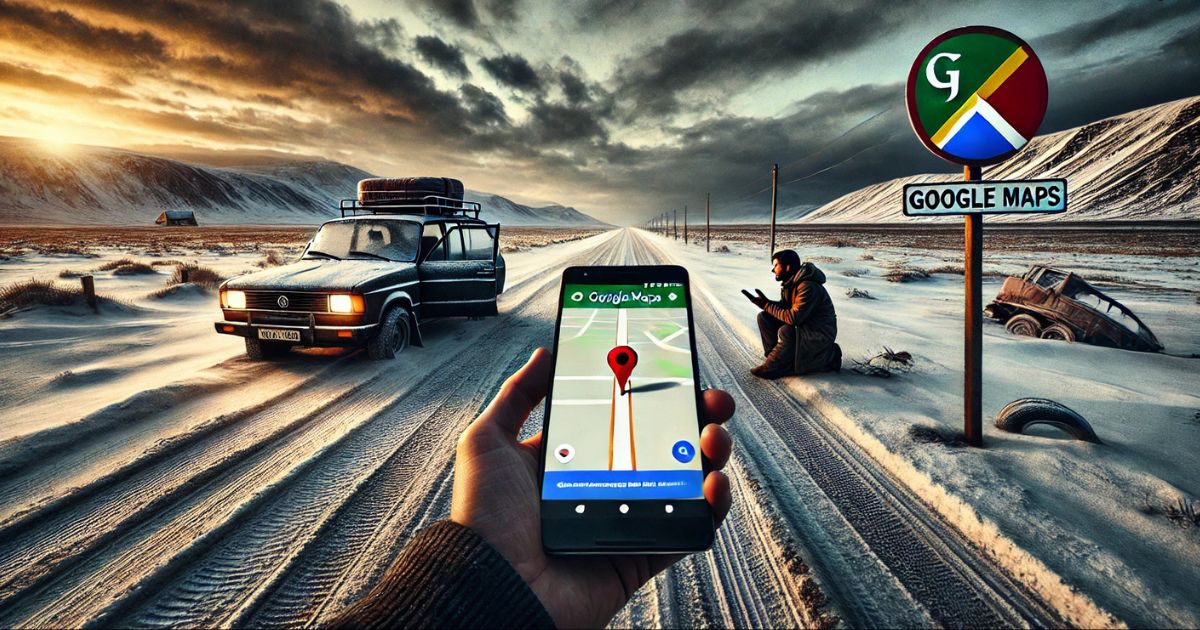
Google Maps is one of the most popular navigation tools in the world. Millions of people use it every day to find directions, plan trips, and explore new places. While the app is incredibly useful most of the time, it’s not perfect. In some cases, Google Maps has led people to dangerous or remote areas where they became stranded, causing frustration, fear, and even life-threatening situations.
In this article, we’ll explore real stories of people stranded by Google Maps, why these mistakes happen, and what you can do to stay safe while using the app.
The Problem with Google Maps in Remote Areas
Google Maps relies on data from various sources, including satellite images, road networks, and user feedback. However, this data isn’t always accurate, especially in rural or remote regions. Roads may be misclassified, non-existent, or unsafe. Additionally, Google Maps sometimes suggests shortcuts or alternative routes that can lead to trouble.
For example:
- A road that appears on the map might be a narrow dirt trail, unsuitable for most vehicles.
- A suggested route may take drivers through isolated areas with no cell service or help nearby.
- Errors in location data can direct people miles away from their intended destination.
Real Stories of People Stranded
1. The Family Lost in the Oregon Wilderness
In 2022, a family of four from California was traveling through Oregon when Google Maps directed them down a logging road. The app had identified this as a shortcut to their destination. However, the road was unpaved, covered in snow, and far from any nearby towns.
Their car got stuck in the snow, leaving them stranded for over 24 hours. With no cell service and freezing temperatures, they were forced to ration their food and use their car for warmth. Thankfully, they were eventually rescued by a search-and-rescue team after they didn’t arrive at their destination on time.
2. Tourists Trapped in the Australian Outback
A group of tourists visiting Australia decided to rely on Google Maps to navigate the Outback. The app suggested a shortcut that turned out to be a dangerous, unmaintained road through a desert region.
Their vehicle broke down in the middle of nowhere, leaving them without water or supplies. It took days for them to be found, as the area was so remote. This story highlights how relying solely on digital navigation tools can be risky in unfamiliar and sparsely populated areas.
3. Delivery Drivers in Trouble
Delivery drivers are often victims of Google Maps errors. For example, a delivery driver in Alaska ended up on an icy, unplowed road in the middle of a snowstorm because Google Maps suggested it as the fastest route. His car slid off the road, and he had to walk several miles in freezing temperatures to find help.
Why These Mistakes Happen
There are several reasons why Google Maps may lead people into trouble in remote areas:
- Outdated or Incorrect Data: Some roads on Google Maps may no longer exist, while others may have been added incorrectly.
- Over-Reliance on Algorithms: Google Maps prioritizes speed and efficiency, sometimes suggesting routes that are impractical or unsafe.
- Limited Local Knowledge: In less-populated areas, there’s less data available to ensure accuracy.
- Misinterpretation of Terrain: Google Maps cannot always distinguish between a paved road and an unpaved trail.
The Consequences of Being Stranded
Being stranded in a remote area due to navigation errors can have serious consequences, including:
- Lack of Resources: In remote areas, food, water, and fuel are often unavailable.
- Health Risks: Extreme temperatures, dehydration, and lack of shelter can put lives at risk.
- No Cell Signal: Many remote areas lack cell phone coverage, making it impossible to call for help.
- Vehicle Damage: Rough terrain or poor road conditions can damage vehicles, making escape even harder.
How to Stay Safe When Using Google Maps
If you’re planning a trip that involves remote areas, here are some tips to ensure your safety:
1. Double-Check the Route
Before you begin your journey, look at your route closely. Compare Google Maps’ directions with other tools, like paper maps or another navigation app.
2. Research the Area
Learn about the roads and terrain you’ll be traveling through. If you’re unfamiliar with an area, check reviews or ask locals for advice.
3. Don’t Follow Blindly
If Google Maps suggests a route that looks questionable (like an unpaved road), trust your instincts. Stick to main roads and highways when possible.
4. Carry Emergency Supplies
Always carry essentials like water, food, a first aid kit, a flashlight, and a portable phone charger. In snowy regions, bring blankets, extra clothes, and snow chains for your tires.
5. Inform Someone About Your Trip
Let someone know your travel plans, including your route and estimated arrival time. If you don’t arrive as expected, they can alert authorities.
6. Download Offline Maps
Before traveling to areas with poor cell service, download offline maps on Google Maps or another navigation app. This ensures you can still navigate even without an internet connection.
7. Use Multiple Navigation Tools
Don’t rely on just one navigation tool. Use a backup app or a physical map to cross-check your route.
What Google Maps Is Doing to Improve
Google constantly updates its maps to fix errors and improve accuracy. The company relies on user feedback to identify and correct issues, and they use machine learning to improve route suggestions. However, it’s impossible to make navigation 100% accurate, especially in remote or rural areas.
Conclusion
Google Maps is a powerful tool that makes traveling easier for millions of people. However, it’s not perfect, especially in remote areas where data may be incomplete or outdated. Stories of people stranded because of navigation errors remind us of the importance of preparing for trips and using common sense when following directions.
By staying alert, double-checking routes, and carrying emergency supplies, you can avoid becoming another cautionary tale of being stranded by Google Maps. Remember: technology is helpful, but your safety ultimately depends on your decisions and preparation.




